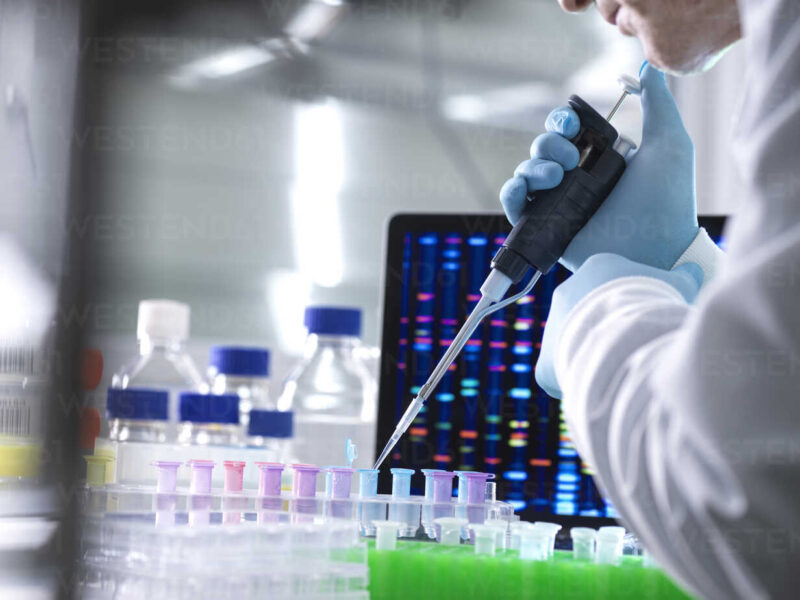Both HPLC testing and UPLC testing are Liquid Chromatography which is used in separating the components of a compound or mixture.
What is HPLC Testing?
HPLC stands for High-Performance Liquid Chromatography, a technique that is used to segregate different constituents of a compound using high pressure to thrust the solvents through the column.
It is the most common technique which is used to identify, quantify and separate the elements of the mixture.
HPLC is widely used for the anatomization of constituents of pharmaceutical activities, pesticides, drug products, and many other substances.
What is UPLC Testing?
UPLC stands for Ultra-high Performance Liquid Chromatography. In the UPLC column particle size of less than 2um can be used.
This allows for very fast analysis and for better separation than the conventional particle size of 5um that is used in HPLC.
The pumping pressure is so high that it makes it more efficient and interesting.
Types of HPLC:
Normal phase HPLC:
The normal phase HPLC method separates analytes on the basis of polarity. NP-HPLC uses a non-polar mobile phase and a polar stationary phase.
Mobile phases are usually diethyl ether hexane, chloroform, methylene chloride, and other mixtures of these. Stationary phase is usually silica.
Reverse-phase HPLC:
The mobile phase is a polar liquid, such as mixtures of water and methanol or acetonitrile, while the stationary phase is non-polar in nature.
Size exclusion HPLC:
In this type, the particles are separated according to the molecular sizes. The larger molecules are rapidly washed through the column while the smaller molecules are penetrated inside the porous of the packing particles, and the same is eluted later.
Ion exchange HPLC
This technique is used only with ionic samples.
Instruments of HPLC:
- HPLC testing solvent reservoir
- Pump
- Columns
- Sample injector
- Detector
- Data collection devices
Principle of UPLC:
The fundamental principle of UPLC is based on the van Deemter relationship, which explains the interrelationship between plate height and flow rate.
The equation shows the flow range with the smaller particles is much greater in comparison with larger particles to see good results.
The introduction of UPLC has paved the way for the improvement of existing instrumentation facilities for LC, which lay hold of the benefit of the separation performance (by decreasing dead volumes) and consistent pressures.
Efficiency is proportionate to the length of the column and inversely proportional to the radius of the particles.
That being so, the column length can be cut back by a similar factor as the particle radius without exerting influence on the resolution.
Instruments of UPLC:
- Sample injection
- UPLC column
- CSH particle technology
- BEH particle technology
- HSS particle technology
- PST column
- The detector
- Solvent delivery system.
Uses of UPLC system:
Elevated-temperature chromatography also allows high flow rates by cutting back the viscosity of the mobile phase, which remarkably reduces the column backpressure.
Monolithic columns contain a polymerized porous support structure that provides lower flow resistances than the conventional particle-packed columns.
How to operate an HPLC system?
1)Turn on the switches of the detector and the pump.
2) Turn on the computer you are working on and the printer.
3)The word “Hewlett Packard System Hardware Test” will be shown on the monitor, which means the system is checking if it is operating well. If the system did not find any problems, it would show the word “pass”.
4)To get into the HPLC system, type “C:\> win.”
5) Double click on the “word instrument online HPLC system” once the word “HP ChemStation” appears.
6) The word HPLC system will appear on the monitor, which gives you “peak”, wavelength, pressure, solvent or flow rate of the mobile phase.
7)Click on the button ‘pump on’ and click ‘enter’ for the pump.
8) Click on the button ‘lamp on’ for the detector and click enter. You can also adjust the wavelength as needed.
9)Adjust the pump with the help of “the instrument” and “the setup pump” options which are given on the screen.
10) Gradually increase the flow rate of the mobile phase by the step of 0.1 ml/min. As time passes, the pressure will increase. Once the word “Ready” appears on the screen, it implies that the pressure is constant. Then increase the flow rate of the mobile phase one more step. Repeat the same process until it reaches the preferred flow rate. Wait until the baseline is steady, then prepare to inject the sample.
11)Make sure that the syringe is clean. Inject the sample to the HPLC. The elements of the sample will be separated, and the time is counted.
12)Peak of each element will be shown on the monitor screen when there are no components left to detect. Press F8 to stop the detection process.
13)The computer will calculate and combine the areas of each peak. Then the results will be presented in relation between the area and the retention time. Peaks and other results can be viewed by clicking on the following icons; “View”, “Data analysis”, “Load signal”, and “Integration result”.
